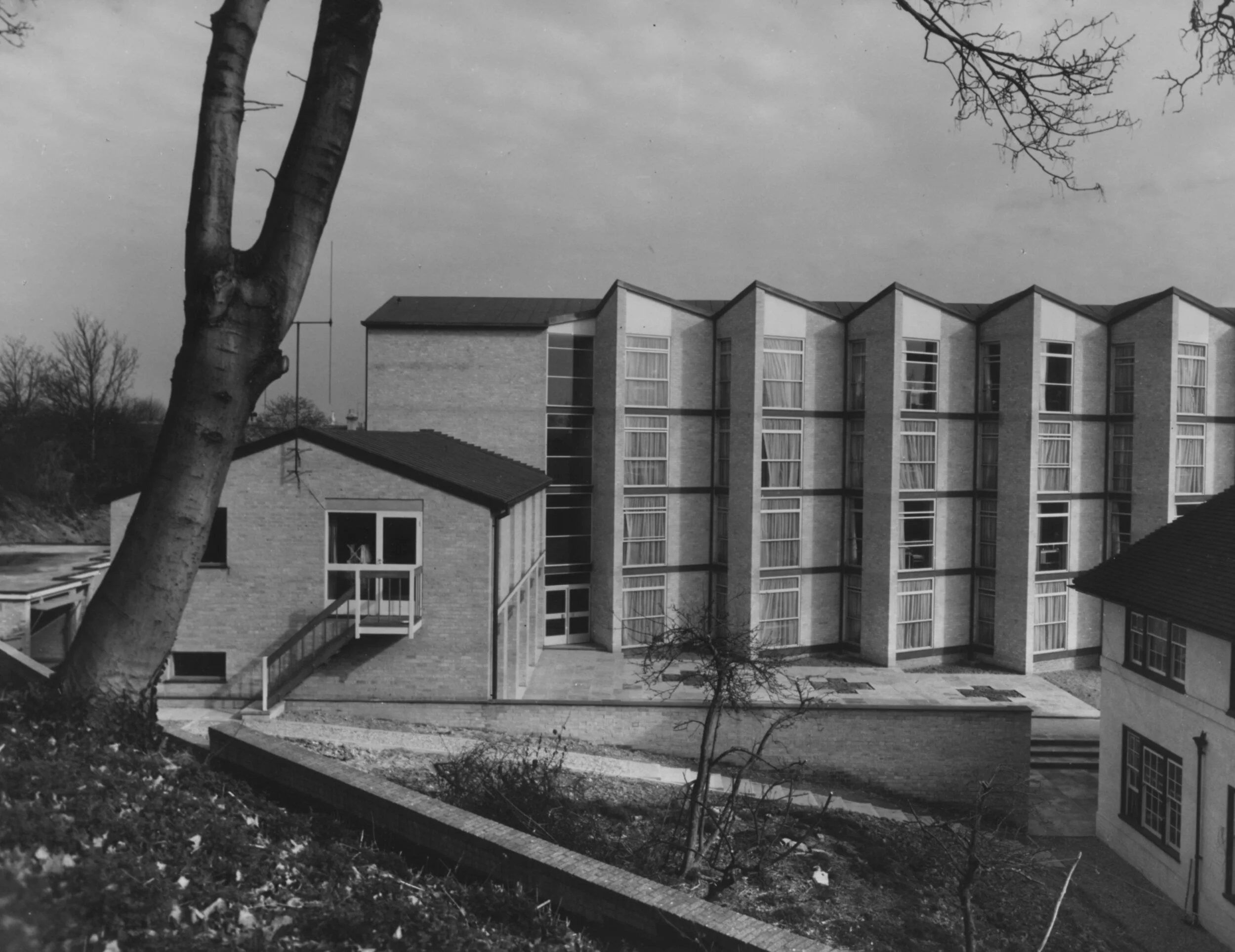A CAMBRIDGE MODERNIST: THE ARCHITECTURE OF DAVID WYN ROBERTS
BY CORY BUCKNER, FORWARD BY NICHOLAS RAY AND INTERVIEWS WITH PETER EISENMAN AND ANTHONY VIDLER
PUBLISHED, 2019 (CRESTWOOD HILLS PRESS)
A CAMBRIDGE MODERNIST: THE ARCHITECTURE OF DAVID WYN ROBERTS
Forward by Nicholas Ray, Interviews with Peter Eisenman and Anthony Vidler. Text by Cory Buckner
David Wyn Roberts began his thirty-year career in architecture after returning from service during World War II. He was hired as a lecturer for the School of Architecture at Cambridge University and given a commission for Magdalene College, where he became a fellow. Roberts’ design sensibilities were based on his scholarship as a lecturer in the history of architecture, studio instructor, and author of Hawksmoor’s Plan for Cambridge, published by Cambridge University Press. Many of his commissions were residential buildings for Cambridge colleges; he built more in that city than any other architect in history. He always maintained a human scale to his work, considering the particular needs of the project to be the generator of design. His long career included residential buildings for colleges not only in Cambridge but Oxford, Liverpool, Durham, and Wales. With enthusiasm and integrity, Roberts maintained a practice that expanded to include a wide variety of commissions, often enlisting his students within the practice he formed with partner and former student Geoffrey Clarke. His office was an extension of the school, where many future luminaries such as Anthony Vidler, Cedric Price, and Lionel March had their first experience of architectural practice.
Roberts’ career spanned some of the most interesting times and periods in recent architectural history, from early modernism, inspired by Walter Gropius and Marcel Breuer through the new Brutalists to 1970’s vernacular revival. Although his work reflected changing currents of architectural thought, what separated Roberts from his contemporaries was a sincere interest in the user’s needs, going beyond the particular program if he saw the need for a master plan. His interest in building materials and quality construction as well as keeping his projects within the context of the surroundings, gave his work a timeless quality.
CRESTWOOD HILLS PRESS
9780997546002
U.S. $29.95
Pbk, 10.25 X 10 in. / 190 pgs / 99 color / 12 duotone / 78 b&w.
David Wyn Roberts (1911- 1982, Liverpool, England) an architect and professor of architecture at the University of Cambridge, England, was best known for designing more residential colleges in the city of Cambridge than any other prior architect in the history of the city.
EARLY LIFE
Robert’s father, Reverend John Roberts, was a distinguished figure in the Presbyterian Church of Wales, based in Cardiff, instilled a strong sense of honesty, truth, and perfection.
EDUCATION
Roberts attended Welsh School of Architecture. The basic foundation of the courses was geared toward the Beaux-Arts, but several examples of modernist architecture being constructed throughout the country were topics of discussion, and the student projects reflected this interest in current trends.
CAREERThe successful practice of David Roberts, and later the partnership of David Roberts and Geoffrey Clarke, specialized in university student accommodations. The continued recommendations by college bursars, who knew they could entrust Roberts and Clarke to produce designs with consistent character and quality, guaranteed a steady flow of work for several decades. For a city steeped in historical context, it is extraordinary that Roberts and Clarke - produced projects solely utilizing a modern language for not only institutional clients but also for residential, church, school, and a few commercial projects.






